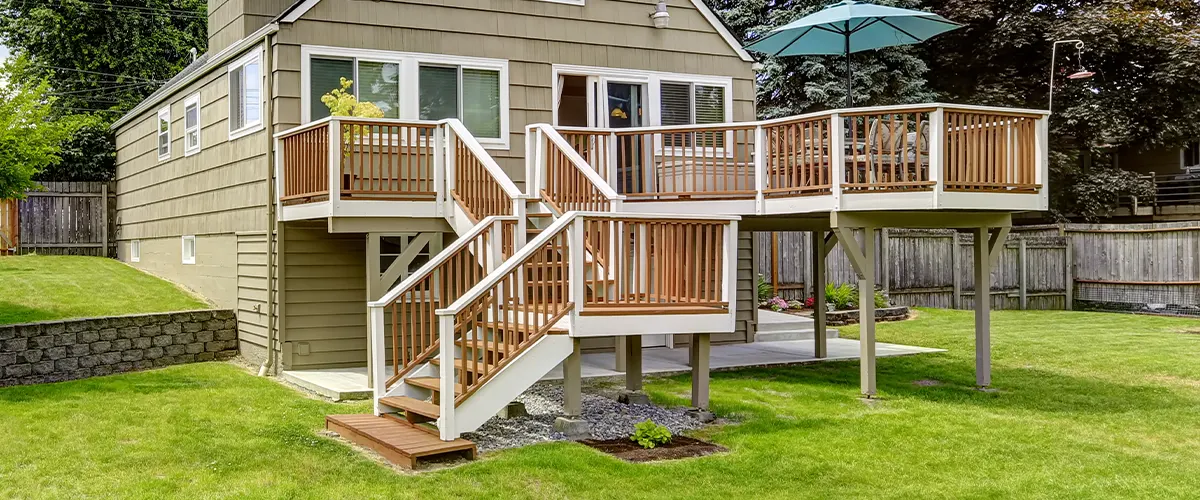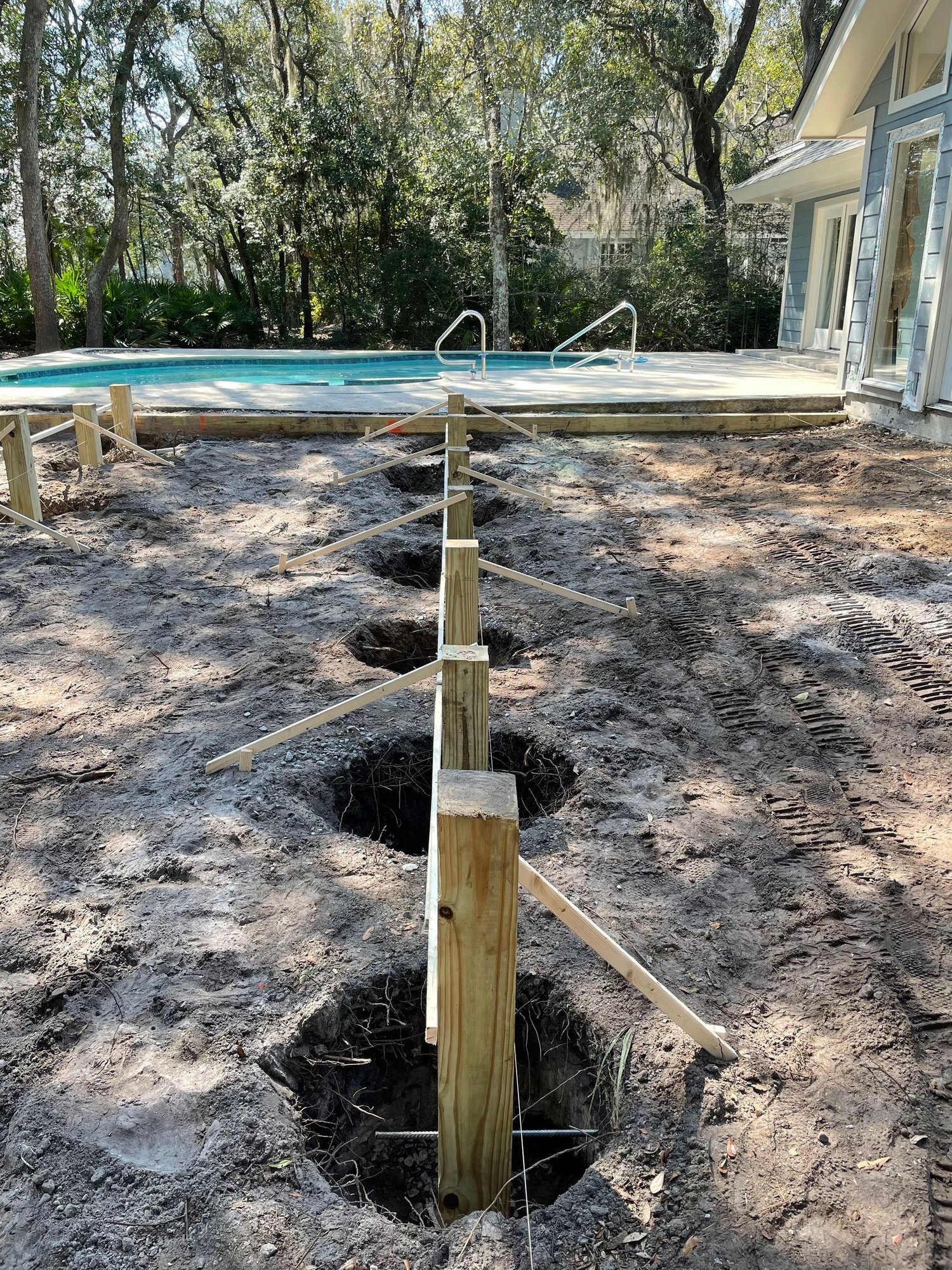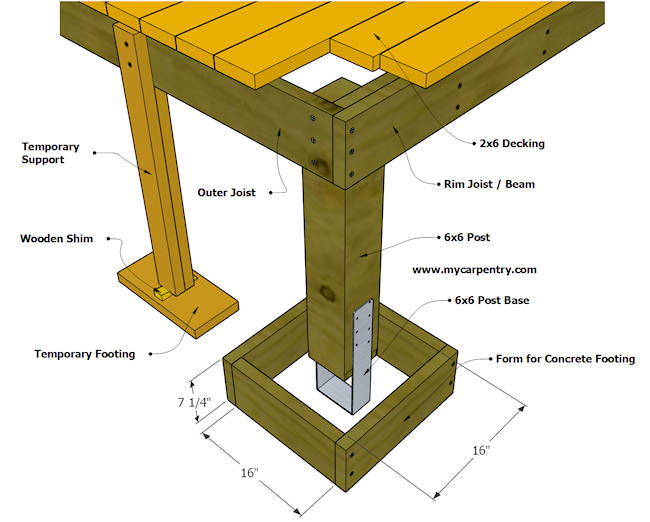Engineered for Success: The Scientific Research Behind Durable and Resistant Deck Footings
Engineered for Success: The Scientific Research Behind Durable and Resistant Deck Footings
Blog Article
Professional Tips for Installing Deck Footings to Support Your Outdoor Area
When it comes to constructing a deck, one of the most essential aspects to think about is the installment of appropriate grounds. These footings are the structure upon which your exterior space will rest, offering stability and support for years to come. What exactly does it take to mount deck grounds appropriately?
Value of Appropriate Deck Grounds
Proper deck footings are essential for making sure the stability and durability of your outdoor space. When building a deck, it is crucial to focus on the structure on which it will rest. Deck footings give the necessary support for the entire structure and assistance distribute the weight equally - Deck Footings. Without solid and properly mounted footings, your deck may end up being unpredictable, bring about safety hazards and pricey fixings.

Along with security, correct deck footings likewise add to the durability of your outdoor area (Deck Footings). Footings that are designed and created to hold up against the elements and soil conditions in your area will assist prevent the deck from resolving or shifting in time. By making certain the footings are appropriately sized and installed, you can lessen the risk of damage to the deck structure, prolonging its life-span and decreasing the requirement for pricey fixings or replacements

Selecting the Right Sort Of Grounds
When picking the appropriate type of grounds for your deck, it is essential to consider factors such as dirt problems, regional building ordinance, and the overall style of your exterior area. The sort of footing you choose will certainly play a critical function in guaranteeing the stability and longevity of your deck.
One usual kind of footing is the concrete footing. Concrete footings appropriate for most soil conditions and give excellent assistance for decks. They are commonly mounted below the frost line to avoid changing and working out because of freezing and thawing cycles. Another option is helical piers, which are optimal for areas with unpredictable soil or high water tables. These piers are screwed right into the ground and provide solid support for the deck.
In many cases, you might need to make use of specialized footings, such as stack grounds or deep foundations, if you are building a multi-level or big deck. These footings are made to disperse the weight of the deck over a bigger area, making sure stability and preventing sinking or resolving.
Prior to choosing a kind of footing, it is important to seek advice from neighborhood building ordinance and laws to ensure conformity. Additionally, consider the style and intended use of your exterior room. Factors such as the size, shape, and load-bearing demands of your deck will certainly influence the kind of footing that is most ideal.
Preparing the Ground for Footing Setup
To appropriately prepare the ground for footing setup, it is very important to evaluate the dirt problems and take essential steps to make certain security and longevity of the deck. The initial step is to dig deep into the area where the grounds will be installed. The deepness of the excavation will certainly depend upon the frost line in your area and the certain needs of the deck layout. It is important to remove any plants, rocks, or debris from the excavation to make certain a solid foundation.
When the area has been excavated, the next step is to portable the soil. This can be done using a plate compactor or by utilizing a hand meddle. Condensing the soil aids to eliminate any kind of voids or air pockets, which can cause working out and instability over time.
After compacting the dirt, it is very important to lay a layer read here of gravel or smashed stone at the bottom of the excavation. This will provide drain and assistance to prevent water from merging around the grounds, which can result in disintegration and instability.
Step-by-Step Guide to Setting Up Deck Footings
After correctly preparing the ground for footing setup, the following step is to begin the procedure of installing deck grounds. This step-by-step guide will certainly supply you with a clear understanding of just how to set up deck footings for your exterior space.
Figure out the place: Beginning by marking the placements of the deck footings making use of risks and string. Guarantee that the areas align with the design and format of your deck.
Dig the holes: Make use of an article hole digger or an auger to dig the holes for the footings. The depth and diameter of the openings must be in conformity with neighborhood building regulations and the certain needs of your deck layout.
Degree the holes: Use a level to make sure that the openings are dug to the appropriate depth and are degree with each various other. (Deck Footings)
Add gravel: Location a layer of gravel at the bottom of each opening to boost water drainage and stop the wood from rotting.
Insert the grounds: Position the footings into the holes, making certain they are degree and plumb. Utilize a degree and a measuring visit this website tape to ensure accuracy.
Secure the grounds: Pour concrete into the holes around the grounds, loading them to the top. Use a message degree to make certain the grounds continue to be degree as the concrete collections.
Permit time for treating: Allow the concrete remedy according to the manufacturer's instructions prior to continuing with the deck construction.
Usual Mistakes to Prevent During Footing Installment
One crucial aspect to consider throughout the installment of deck grounds is staying clear of common mistakes that can compromise the security and durability of your exterior room. While deck footings might appear like a straightforward and simple part of the building and construction procedure, overlooking specific elements can cause pricey repair services and possible security hazards down the line.

In addition, disregarding to install proper drainage actions can trigger water to collect around the grounds, leading to rot, degeneration, and the ultimate weakening of the deck's foundation. Utilizing the incorrect kind of footing material or stopping working to properly secure the grounds can jeopardize their architectural integrity.
To stay clear of these errors, it is vital to talk to a professional or follow sector guidelines to make certain correct ground setup. By doing so, you can guarantee the stability and durability of your outside area, providing a secure and delightful environment for many years to come.
Verdict
Finally, setting up appropriate deck footings is critical for the security and long life of your exterior room. By picking the right kind of footings and sufficiently preparing the ground, you can make certain a strong structure for your deck. Complying with a detailed guide and preventing check my site common mistakes throughout footing installation will certainly further improve the durability and safety of your deck.
Appropriate deck grounds are vital for making certain the security and longevity of your exterior space. The footings offer as a connection between the ground and the deck, allowing the weight of the deck and its occupants to be dispersed evenly into the soil.One typical kind of footing is the concrete ground. Place the grounds: Position the grounds right into the holes, making sure they are level and plumb. Protect the grounds: Put concrete right into the openings around the footings, loading them to the top.
Report this page